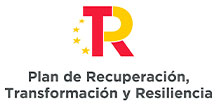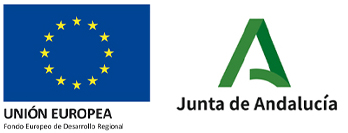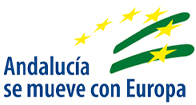MIURA 1 SN1 Test Flight 1
StreamingMIURA 1 SN1 Test Flight 1
LAUNCH SITE
Launch site of Médano del Loro. “El Arenosillo” Test Centre, at the National Institute of Aerospace Technology (INTA) Huelva, Spain.
LAUNCH WINDOW
7th October, 02:00h to 10:00h CET (00:00h to 08:00h UTC)
LAUCH TIME T-0
7th October 2023, 02:00h CET (00:00h UTC)
WATCH LIVE
7th October, 01:00h CET (6th october, 23:00h UTC)
PAYLOAD
Scientific experiment of the Center of Applied Space Technology and Microgravity (ZARM).
12 MINUTES
THE FLIGHT LASTS 12 MINUTES IN TOTAL
6 MINUTES
TIME IN MICROGRAVITY
80 KM
OF APOGEE OF THE SUBORBITAL FLIGHT
4 HOURS
TO RECOVER THE PAYLOAD AFTER THE FLIGHT
WATCH LIVE
MAIN OBJECTIVES
OF THE MISSION
The objective of the first flight of the MIURA 1 SN1 technology demonstration of PLD Space is to acquire as much information as possible about the flight in order to obtain data that helps determine the validation process and the design of the technology, along with any potential improvements or changes in the development that will subsequently be made to the MIURA 5 orbital launch system. In this sense, every second that MIURA 1 is in the air will be a successful second. This first mission will enable PLD Space to check the performance of key technologies during flight time, which is something that has not been possible before. The following will be analysed:
- The engine thrust profile in flight conditions.
- The aerodynamic performance of the launch system.
- The follow-up of the nominal trajectory.
- The nominal performance of all the subsystems in real conditions.
- The exposure to real conditions in space.
SECONDARY OBJECTIVES
OF THE MISSION
The secondary objectives of the mission will focus on acquiring in flight information about different subsystems, especially in relation to the performance of MIURA 1 during the re-entry, as well as the possibility of arriving in splashdown conditions that ensure the recovery of the rocket in the Atlantic Ocean. To meet this objective there are two boats in the designated splashdown area for an eventual recovery of MIURA 1. To this end, there are also divers that specialise in offshore underwater operations and air surveillance teams.
PAYLOAD

The mission is expected to last 12 minutes. The ascent phase will be the first 6 minutes of the flight, when, in microgravity and apogee conditions, the 80 km altitude will be reached. The mission will end with the recovery of the rocket in the Atlantic Ocean after splashdown. The MIURA1 SN1 mission has an experiment from the German Center of Applied Space Technology and Microgravity (ZARM) on board, and the objective of this is to study microgravity conditions. In this way, this first suborbital flight will enable ZARM to obtain the necessary information to carry out scientific experiments on future Suborbital flights.
MAIN EVENTS OF THE LAUNCH
Below there is a temporary list of the lead-up events in the chronology of MIURA 1. Both the times and the sequencing are shown for guidance only.
- Liftoff
- Start of the gravity turn manoeuvre
- Start the cancellation of the gravity turn manoeuvre MECO
- Start of microgravity
- Space conditions
- Apogee
80 km - End of microgravity
- Parachute
- Land
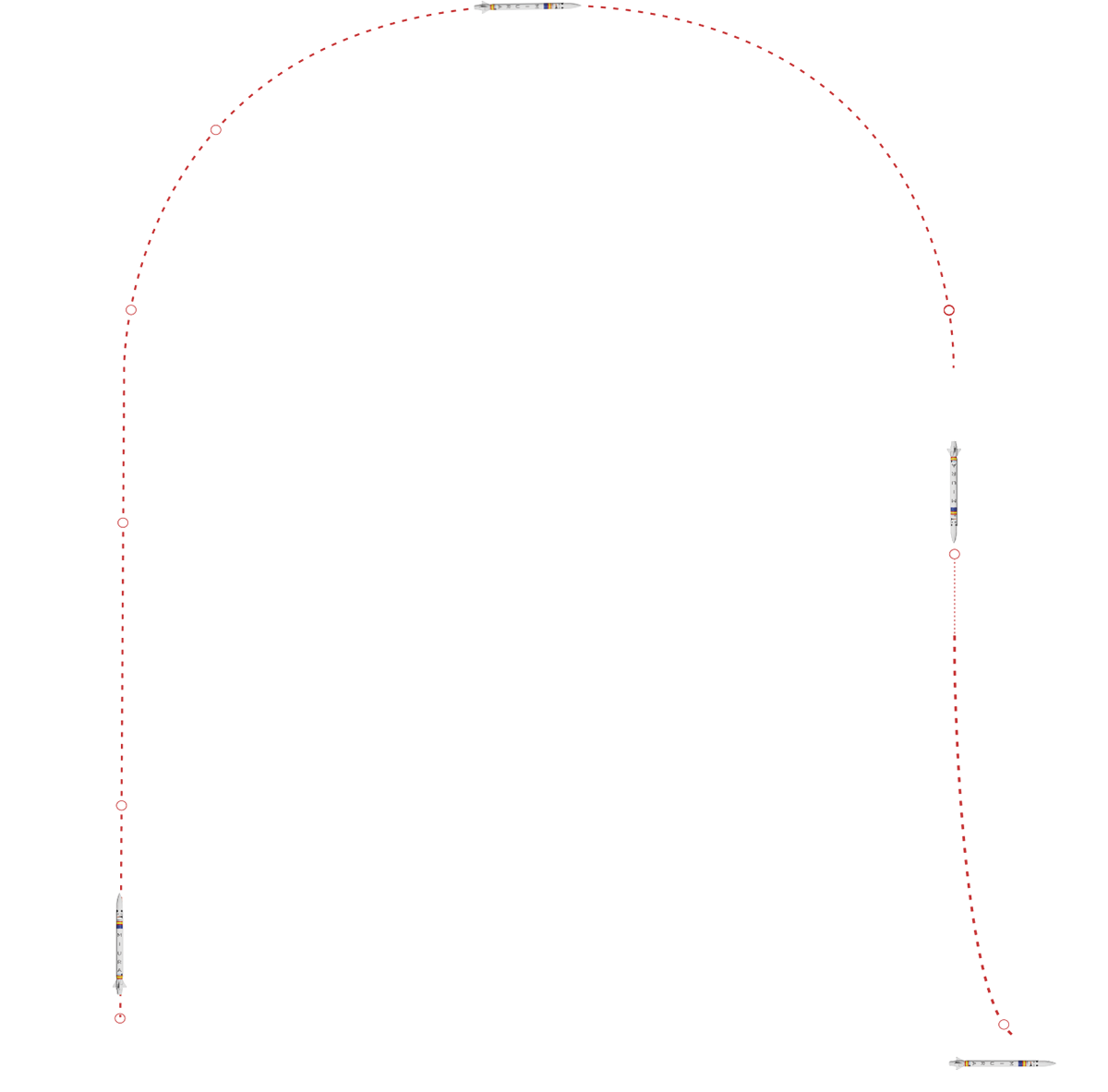
| TIME AT T0 | LAUNCH OPERATIONS |
|---|---|
| T0-09:00:00 | HOLD 3 |
| T0-09:00:00 | AVIONIC STARTUP SEQUENCE |
| T0-07:30:00 | ALIGNMENT |
| T0-06:30:00 | SYSTEM PURGE |
| T0-06:00:00 | REFUEL WITH RP-1 |
| T0-05:30:00 | ENGINE INSPECTION |
| T0-05:00:00 | REFUEL OF RCS AND REFUEL He |
| T0-04:00:00 | HOLD 2 |
| T0-04:00:00 | PLATFORM PRE-CONFIGURATION |
| T0-03:30:00 | REFUEL PROPELLANT: HELIUM |
| T0-03:30:00 | REFUEL PROPELLENT: LIQUID OXYGEN |
| T0-01:15:00 | GROUND SEGMENT CHECKS WITH INTA EXTENSIVE RANGE MONITORING |
| T0-00:45:00 | AVIONICS TERMINAL TESTS GNC CONFIGURATION |
| T0-2 min (idle) | HOLD1 |
| T0-2 min (and counting) | AUTOSEQUENCE |
| T0 | IGNITION |
SEEING THE LAUNCH
The MIURA 1 launch can only and exclusively be seen in person on the beach of the Mazagón Parador hotel, which can only be accessed through the cark park called Parking Playa Parador de Mazagón (Camino la Guijarrosa, 359, 21130, Huelva.
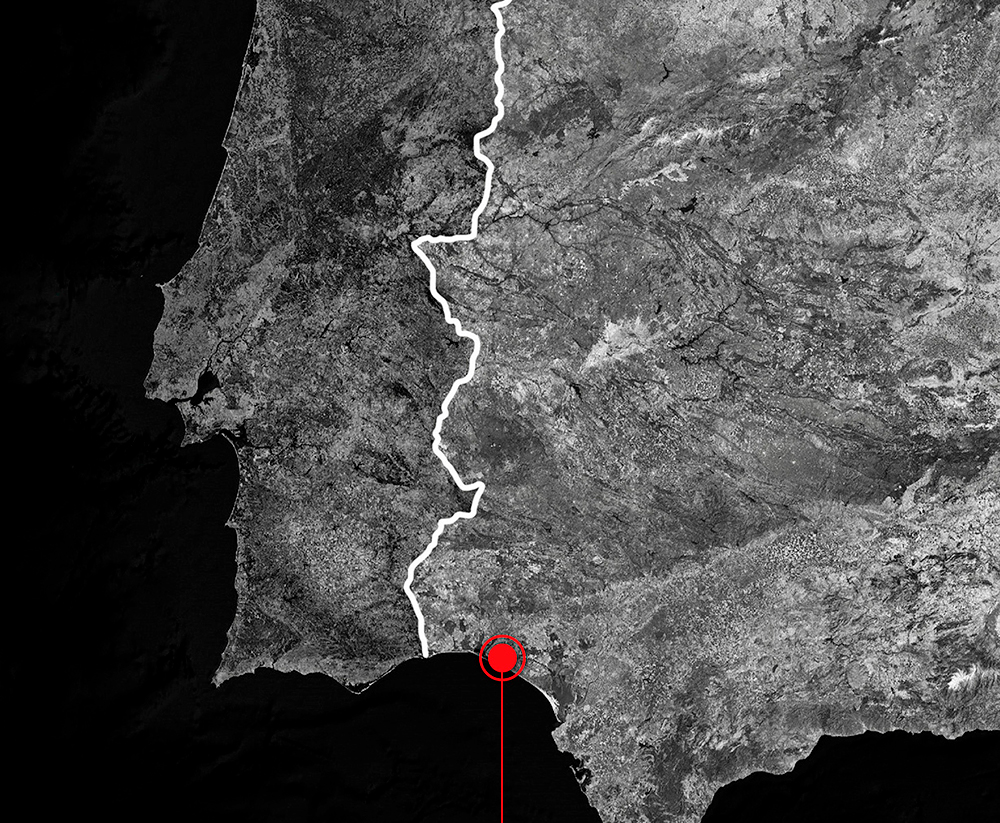

MIURA 1 LAUNCH VEHICLE
1 PAYLOAD BAY
- Designed to research microgravity and technological development.
- Nominal payload mass of 100 kg/200 lb.
- 4 single payload compartments
SINGLE COMPARTMENT
- The single compartment with mass and volume limitation for the payloads, has an energy supply, data storage and downlink services.
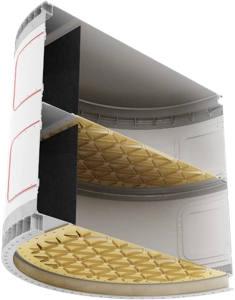
3 FUEL TANKS
- Cryogenic liquid oxygen tank (LOX): 1100 l/-182ºC.
- Kerosene tank (KER): 600 l

2 AVIONICS
- Telemetry system
- Energy storage and distribution
- Computer for payload
- Conditioning and acquisition sensor
- Main TVC and RCS engines
3 FUEL TANKS
- Cryogenic liquid oxygen tank (LOX): 1100 l/-182ºC.
- Kerosene tank (KER): 600 l
TECHNICAL SPECIFICATIONS OF THE MIURA 1
- Length: 12,5 m
- Diameter: 0,7 m ⌀
- Stages: 1
- Type of structure: MMonohull aluminium 2014
- Material: Aluminium 2014 series
- Mass at liftoff: 2.620 kg
- Number of engines: 1 TEPREL-B
- Type of engine: Pressure fed
- Thrust at liftoff: 30.0 kN
- Propellant: Kerosene and liquid oxygen
- Pressurization system: Bang-Bang, with Helium
- Attitude control: Yes, using TVC on the main engine
- Turn control: Yes, using RCS through cold gas
4 PROPULSION SYSTEM
- Liquid fuel rocket engine developed by PLD Space.
- TEPREL-B. In 2021 it became the first KeroLOX rocket engine developed in Europe for space flights.
- 122 seconds of burn time.
- Less than 5 Gs of acceleration during the ascent.
DOWNLOAD AREA
For more information, please contact:
- María Climent - Communication Manager: maria.climent@pldspace.com
- Francesc Casas - Public Affairs Manager: francesc.casas@pldspace.com

